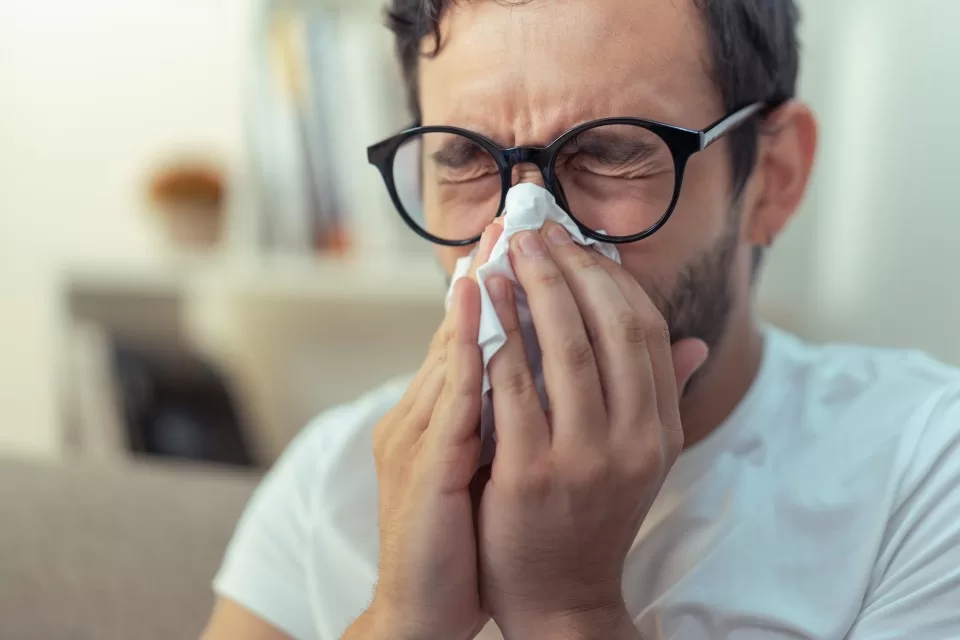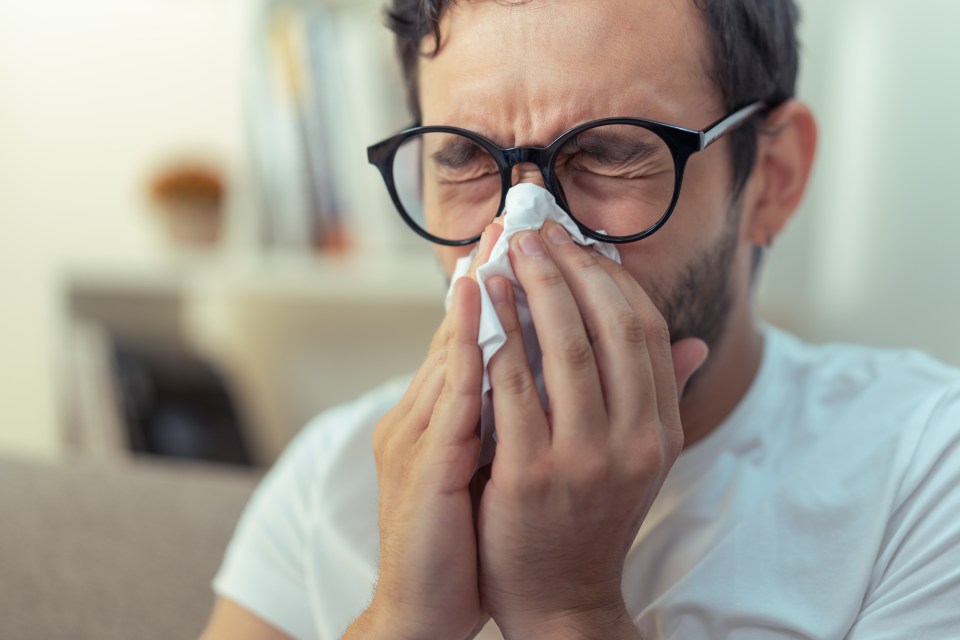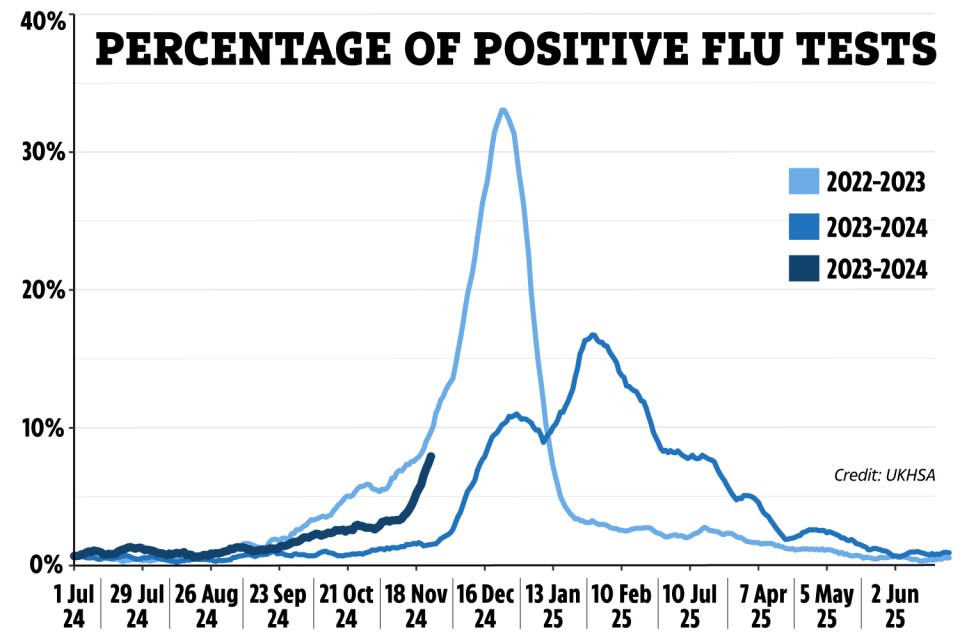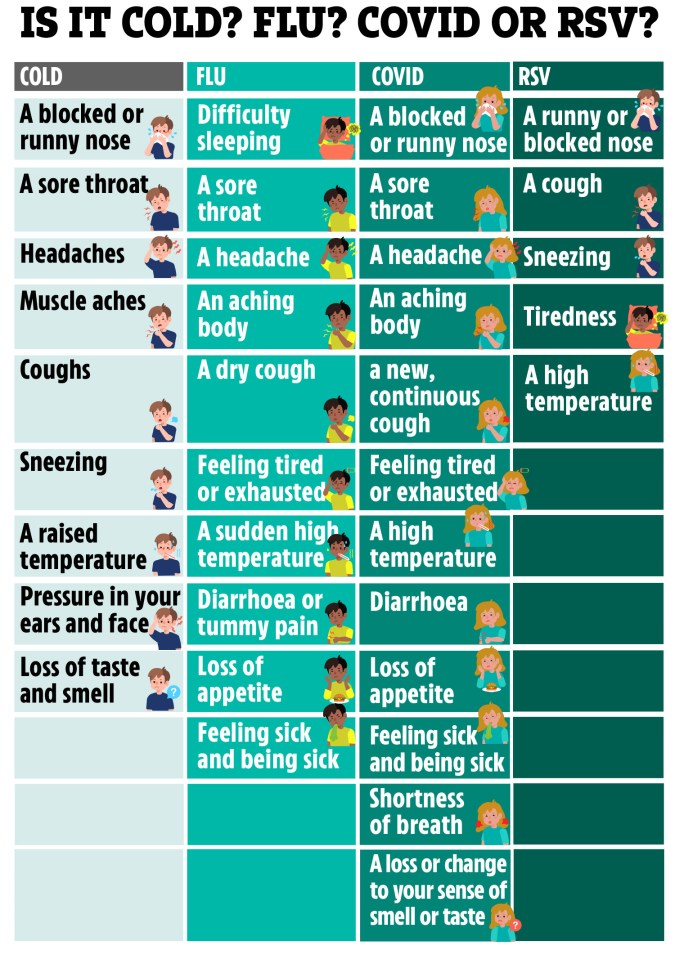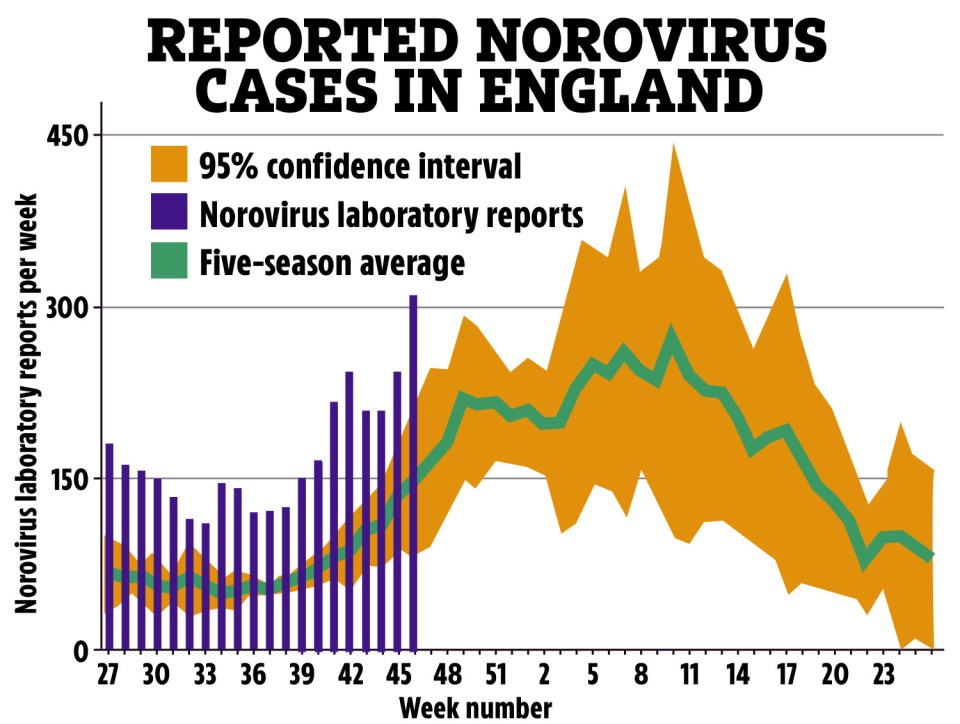FEELINGS sniffly?
It’s that time of year again when everyone appears to be riddled with hacking coughs and sore throats.
What winter bug has got you feeling rubbish this time? Is it a cold, RSV, Covid – or could it be the flu?
With flu season in full swing already, the virus is a strong contender for what’s knocking you down.
Cases jumped by two-thirds in just one week, health chiefs have warned.
The proportion of people in England experiencing symptoms and testing positive for the virus shot up by 67 per cent last week (in the week ending November 24).
This has caused the number of people in hospital with the bug to surge by 50 per cent, reaching 1.81 per 100,000 of the population, fresh UK Health Security Agency (UKHSA) surveillance data says.
Positivity rates climbed from a daily average of 3.9 per cent the previous week to 6.5 per cent, meaning nearly seven in every 100 tests were positive.
On top of that, we’ve got rising levels of RSV, bronchitis and norovirus, and let’s not forget – Covid is still making the rounds too.
“Flu is the cause of the rise in winter illnesses that we’ve seen in the past week, with emergency department attendances also increasing,” Dr Alexander Allen, consultant epidemiologist at UKHSA said.
“If you are showing symptoms of flu or Covid-19 such as a high temperature, cough, and feeling tired and achy, try to limit your contact with others, especially those who are vulnerable.”
Flu cases might not be as high as last winter’s peak yet, but they’re already more than three times higher than this time last year when only two per cent of tests came back positive.
That said, current levels are still lower than they were in 2022, when positivity rates hit 10 per cent by now – kicking off the worst flu season in five years.
For many people, having the flu will feel like an exaggerated cold.
The NHS states that flu symptoms can come on very quickly.
They include:
- An aching body
- A sudden high temperature
- Feeling tired or exhausted
- A dry cough
- A sore throat
- A headache
- Difficulty sleeping
- Loss of appetite
- Diarrhoea or tummy pain
- Feeling sick and being sick
Covid
Meanwhile, Covid seems to be easing, the same data suggests.
The positivity rate dropped by 10 per cent last week to 3.5 per cent based on lab tests.
But in reality, infection rates are probably even lower.
However, this doesn’t mean the nasty bug has gone away.
And with lateral flow tests no longer free, it can be hard to know if you have the bug
Symptoms of Covid thought to be the same cold or flu:
- A high temperature
- Aches
- Tiredness
- A cough or sore throat
RSV and bronchitis
As if those winter bugs weren’t enough, RSV is on the rise, with cases now circulating across all age groups, the new figures suggest.
RSV positivity has jumped slightly to 13.8 per cent, up from 11.7 per cent last week.
It’s a very common bug, and almost all children are infected with it by the time they are two years old.
But in some cases, it can develop into bronchiolitis, which can cause serious breathing difficulties that will need to be treated in a hospital.
It’s no surprise then that hospital visits for acute bronchiolitis are also up, according to the UKHSA data.
Symptoms of an RSV infection usually start within a few days of getting infected.
Most people only get cold-like symptoms, such as:
- A runny or blocked nose
- A cough
- Sneezing
- Tiredness
- A high temperature – signs include your back or chest feeling hotter than usual, sweatiness and shivering (chills)
Babies with RSV may also be irritable and feed less than usual.
If RSV leads to a more serious infection such as bronchiolitis it may also cause:
- A cough that gets worse
- Shortness of breath
- Faster breathing or long gaps between breaths
- Difficulty feeding (in babies) or loss of appetite
- Noisy breathing (wheezing)
- Confusion (in older adults)
Which cold and flu remedies actually work?
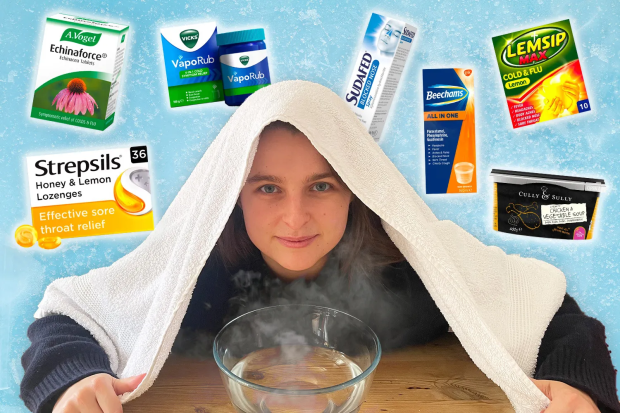
Sun Health reporter Isabel Shaw put nine well-known cold and flu remedies when she was struck with a lurgy.
Over the course of a week, she tried products targeted at all symptoms associated with cold and flu, as well as treatments that only aimed to get rid of specific issues.
These included:
- Hot honey and lemon
- Steam inhalation and Vicks Vaporub
- Echinacea
- Chicken soup
- A spicy curry
- Beechams All in One Oral Solution
- Strepsils
- Lemsip Max
- Sudafed Blocked Nose Spray
She took into account pain reduction, and how quickly and for how long they worked.
Read her full verdicts here
A cold
Rhinovirus, more commonly known as the common cold, is a mild viral infection that circulates all year long.
Professor John Tregoning, of Imperial College London, previously told The Sun that the bug usually peaks in about October but “never really goes away”.
It’s normal for a child to have eight or more colds a year, and adults two, official guidance states.
The NHS says a common cold can cause:
- A blocked or runny nose
- A sore throat
- Headaches
- Muscle aches
- Coughs
- Sneezing
- A raised temperature
- Pressure in your ears and face
- Loss of taste and smell
The difference between a cold and the flu is that a cold does not typically cause such a sudden spike in temperature.
Norovirus
Meanwhile, cases of a nasty bug causing violent bouts of diarrhoea and vomiting have surged by over 30 per cent in two weeks.
They issued an urgent ‘stay at home warning’ to anyone with telltale symptoms of the highly contagious virus to avoid spreading it further.
Reports of norovirus cases surged by 31.6 per cent between November 4 and 17 compared to the to weeks weeks prior, the UKHSA warned in a recent report.
“Norovirus activity is now increasing again across all age groups, with the biggest increase in adults, particularly adults aged 65 years and over,” it said.
According to the health watchdog, the rise in cases “has begun earlier than usual”.
The total number of cases reported was almost double the amount typically seen at this time of year, UKHSA added.
The main symptoms of norovirus are:
- Feeling sick (nausea)
- Diarrhoea
- Being sick (vomiting)
- A high temperature
- A headache
- Aching arms and legs
- High temperature
The symptoms start suddenly within one to two days of being infected.
